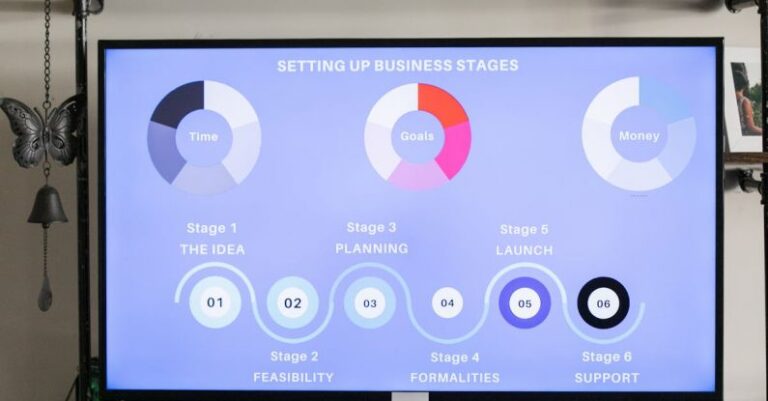How Do You Create Color Palettes for Design Projects

Creating an appealing color palette is a crucial aspect of any design project. Colors have the power to evoke emotions, set the tone, and create a cohesive visual experience for the audience. Whether you are designing a website, a logo, or any other visual material, selecting the right colors can make a significant difference in the overall impact of your design. Here, we will explore some effective tips on how to create color palettes for your design projects.
Understand Color Theory
Understanding the basics of color theory is essential when creating color palettes. Color theory involves the study of how colors interact with each other and how they can be combined to create visually pleasing combinations. The color wheel is a fundamental tool used in color theory, showcasing the relationships between primary, secondary, and tertiary colors. By familiarizing yourself with concepts such as complementary, analogous, and triadic colors, you can create harmonious color schemes that work well together.
Start with a Base Color
When creating a color palette, it is helpful to start with a base color that will serve as the foundation for your design. This base color can be a primary color that represents your brand or the main theme of your project. Once you have chosen the base color, you can then explore various shades, tints, and tones that complement it. Experimenting with different variations of the base color will help you create a well-rounded palette that is visually engaging.
Consider the Mood and Message
The colors you choose for your design should reflect the mood and message you want to convey. Different colors evoke different emotions and associations, so it is essential to consider the psychological impact of each color in your palette. For example, warm colors like red and orange are often associated with energy and passion, while cool colors like blue and green can evoke feelings of calm and serenity. By aligning your color choices with the desired mood and message of your design, you can create a more impactful visual experience for your audience.
Experiment with Color Harmonies
Color harmonies are combinations of colors that work well together and create a sense of balance in a design. Experimenting with different color harmonies can help you find the perfect combination for your project. Some common color harmonies include complementary colors (colors opposite each other on the color wheel), analogous colors (colors next to each other on the color wheel), and triadic colors (colors evenly spaced around the color wheel). By exploring these harmonies, you can discover unique and visually appealing color palettes for your design projects.
Utilize Online Tools and Resources
In today’s digital age, there are numerous online tools and resources available to help you create color palettes effortlessly. Websites like Adobe Color CC, Coolors, and Canva offer color palette generators that can help you explore different color combinations and save your favorite palettes for future reference. These tools allow you to experiment with colors, adjust hues and saturations, and create custom palettes that suit your design needs. By taking advantage of these resources, you can streamline the color selection process and find inspiration for your next project.
Embrace Trends, but Stay True to Your Brand
While it is essential to stay informed about current design trends, it is equally important to stay true to your brand’s identity when creating color palettes. Trends come and go, but your brand’s colors should be consistent and reflective of your brand’s values and personality. By incorporating elements of current trends into your color palette while maintaining your brand’s visual identity, you can create a modern and relevant design that resonates with your audience.
Incorporate Texture and Contrast
In addition to selecting the right colors, incorporating texture and contrast can enhance the visual impact of your design. Texture adds depth and dimension to your color palette, creating visual interest and making your design more dynamic. Contrast, on the other hand, helps highlight important elements and create focal points within your design. By experimenting with different textures and levels of contrast, you can elevate your color palette and create a visually appealing design that captivates your audience.
Choose Colors That Work Across Platforms
When creating color palettes for design projects, it is essential to consider how colors will appear across different platforms and devices. Colors can look different on various screens and in print, so it is crucial to test your color palette across different mediums to ensure consistency. Choosing colors that are versatile and accessible will help maintain the integrity of your design across various platforms and provide a cohesive experience for your audience.
Incorporate Feedback and Iteration
Finally, it is essential to seek feedback on your color palettes and be open to making iterations based on the input you receive. Sharing your design with colleagues, clients, or target audience members can provide valuable insights and perspectives that can help you refine your color choices. By incorporating feedback and being willing to make adjustments, you can ensure that your color palette effectively communicates your message and resonates with your audience.
In summary, creating color palettes for design projects requires a thoughtful and strategic approach. By understanding color theory, starting with a base color, considering the mood and message of your design, experimenting with color harmonies, utilizing online tools, embracing trends while staying true to your brand, incorporating texture and contrast, choosing colors that work across platforms, and incorporating feedback and iteration, you can create compelling and visually engaging color palettes that enhance your design projects. By following these tips, you can elevate your design work and create impactful visual experiences that resonate with your audience.





